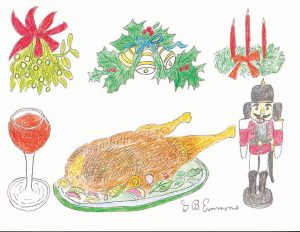The traditional holiday of Christmas was not always looked upon as a favorable celebration by the Puritans in the colonial days of the Massachusetts Bay Colony body of government.
Their strict religion regarded drinking and partying as a false celebration of the birth of Jesus, with stronger ties to paganism than their own concept of Christianity.
In 1659, the governor and legislature passed a law banning the celebration with a stern penalty of five shillings for each offense. This law remained in effect for nearly 200 years, but Henry Wadsworth Longfellow in the year 1856 wrote in his journal, “We are in a transition state about Christmas in New England. The old Puritan feeling prevents it from being a cheerful hearty holiday, even though every year makes it more so.”
Longfellow was right, because as years had gone by, European holiday traditions had come across the pond to our shores with immigrants from Austria, Germany, and Switzerland. Consequently, on April 15, 1856, Massachusetts legislators made Christmas a legal holiday.
A most important imported custom from overseas was the bringing into the home of a decorated tree with origins dating back to the Scandinavian Viking belief that evergreens were a special plant of the Sun God. Bringing them inside was thought to be a blessing for the home during the twelve days of Christmas that ended on January 6.
Other inherited old world symbols from overseas include the drawings in my illustration – clockwise from left to right, a glass of good cheer, a sprig of mistletoe for kissing, a holly wreath with celebrated silver bells, the Advent candle wreath, a historic nutcracker toy, and a roast goose more commonly enjoyed for dinner.
In many Scandinavian and German families, the celebration began at midnight on Christmas Eve when the children were awakened and brought downstairs to open presents. Homemade preparations usually began on December 1 by setting aside special evenings for baking cakes, cookies, and the making gifts or decorations. Little dolls of fruit were also traditional Nordic Christmas toys. The advent calendar was for children to count the days before Christmas opening one window each day to find a yuletide picture inside.
On June 28, 1870, the U.S. Congress, apparently prompted by a memorial drafted by local “bankers and business men,” made Christmas a national holiday on which we can be comfortably joyous.
Bearing in mind it is more blessed to give than to receive, let me ask you to keep in mind the recent suggestion by the news editor of The Wanderer and every year start your holiday shopping small with local shops and crafts, thus making the spirit of a day truly more meaningful in keeping with the rich heritage of Christmas in New England, handed down from ancient ancestral roots and customs.
By George B. Emmons
